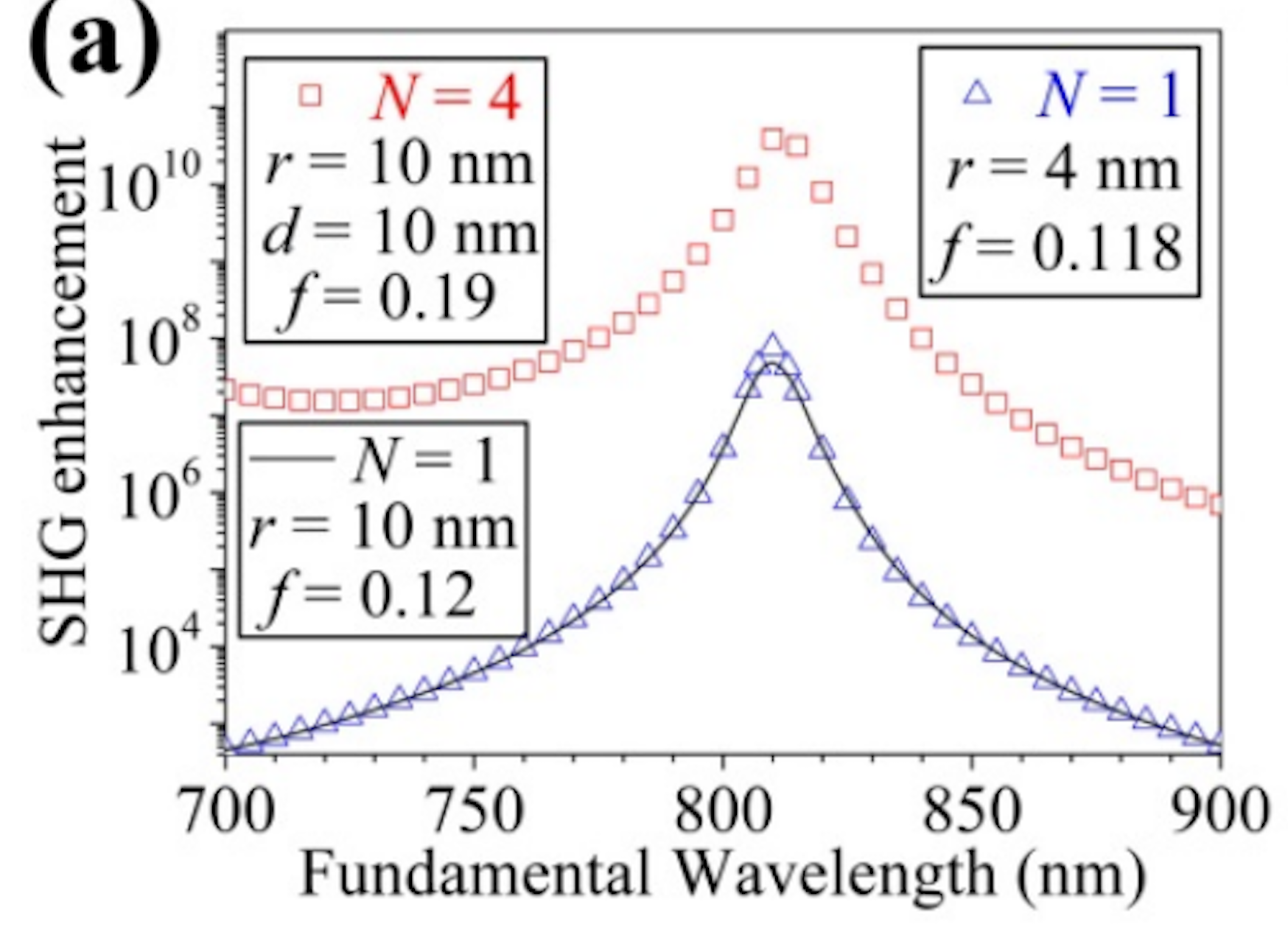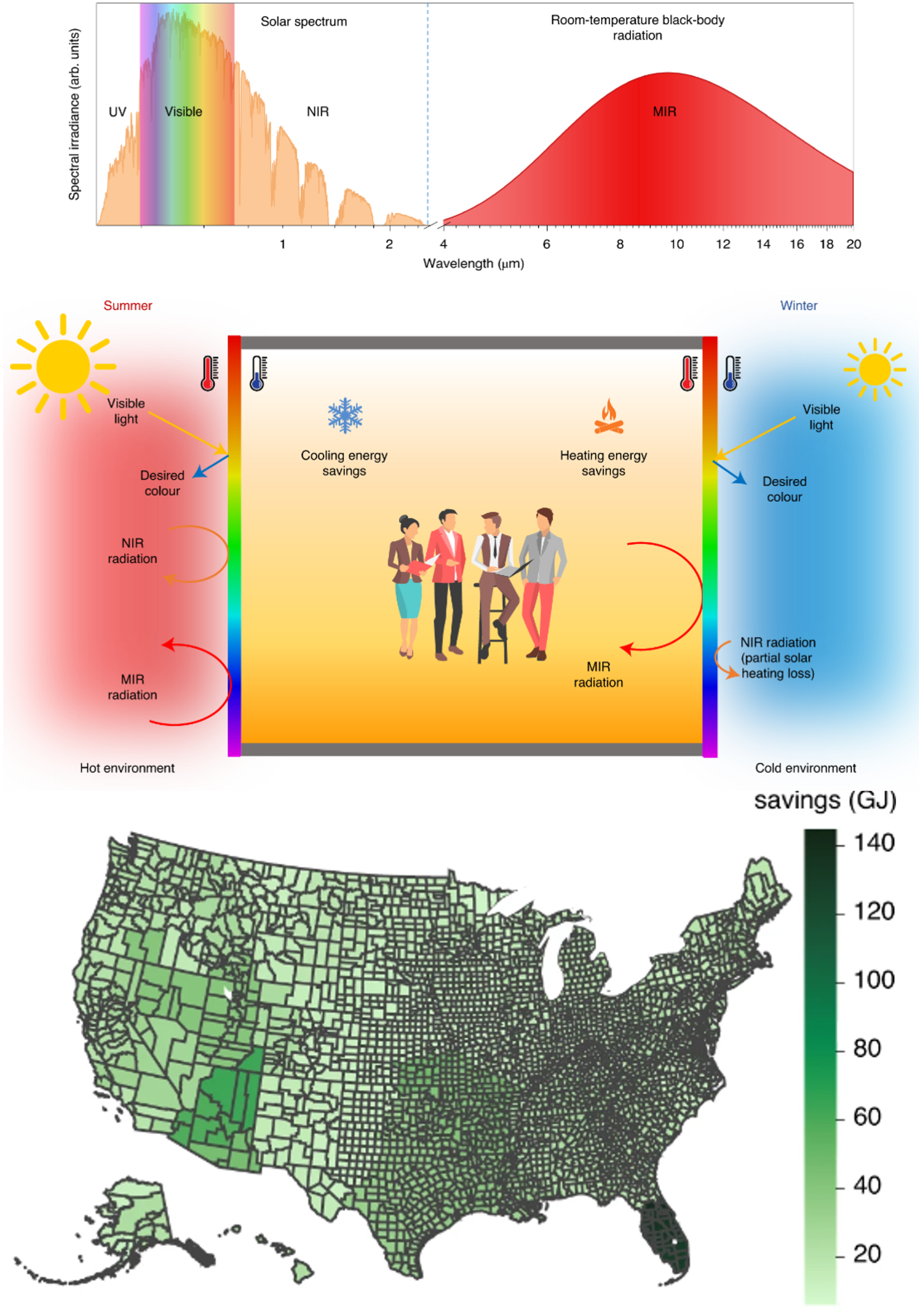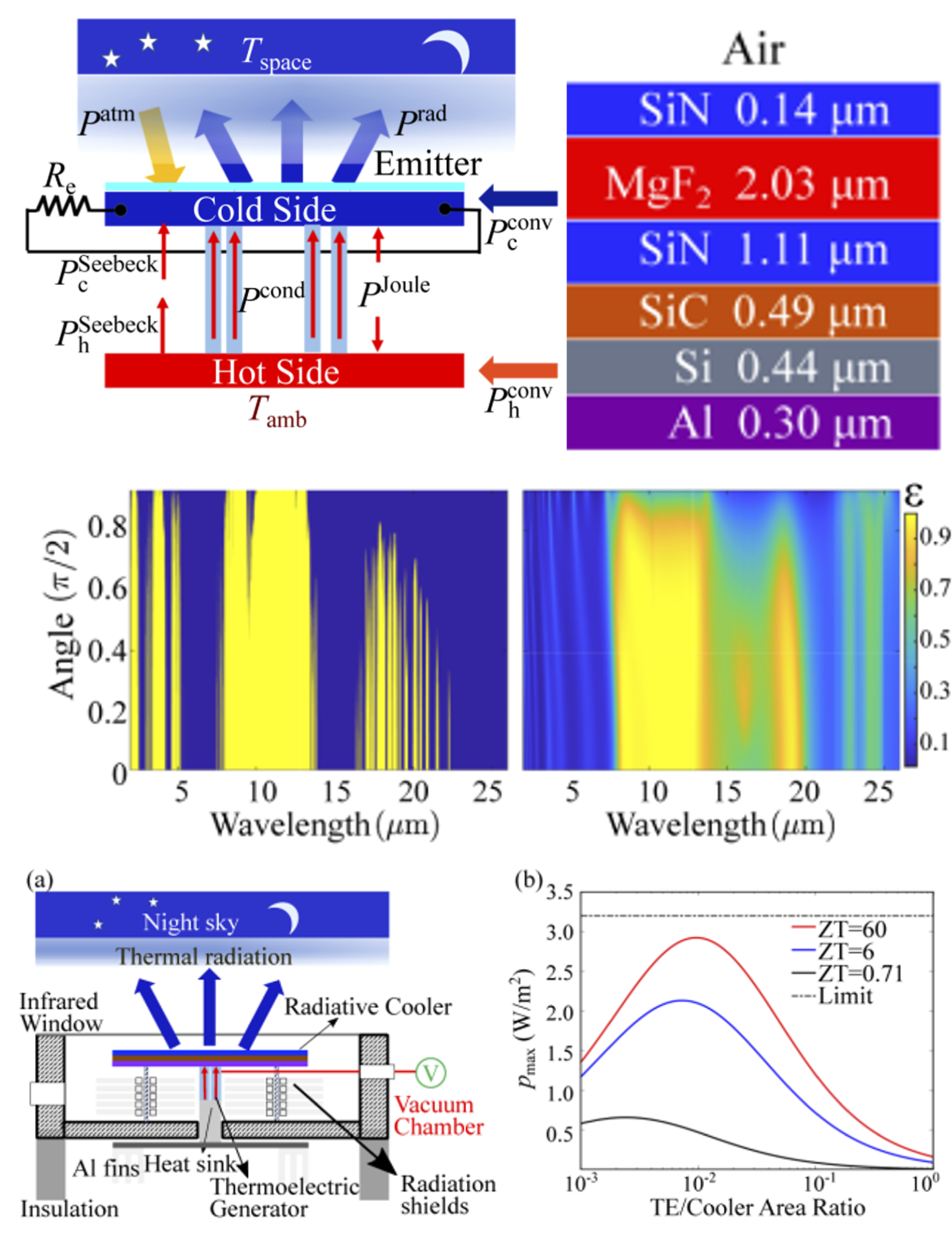Digital Twins For Sustainability
|
|
Coloured low-emissivity films for building envelopes for year-round energy savings
Yucan Peng*,
Lingling Fan* (co-first author),
et al,
Shanhui Fan,
Yi Cui
Nature Sustainability, 2021
Website
/
PDF
/
Bibtex
Contribution: I proposed the EnergyPlus model to evaluate HVAC energy-saving performance for the low-emissivity film. My developed
EnergyPlus model comprehensively considers the heat exchange of the whole building coupled with complicated HVAC systems and outputs the final HVAC energy use of the building. In addition, I also independently proposed a customized thermal model that focuses on the heat transmission reduction of a wall. This model calculates the all-year reduction of heat gain/loss through walls for 16 cities when the coloured low-emissivity film is installed on wall exterior surface, interior surface, and double-sided surfaces, respectively.
Impact: This study on energy-efficient buildings play an essential role in sustainability. My work is imperative to develop innovations to achieve improved energy efficiency of building HVAC with a reduced carbon footprint. My work successfully overcomes the limits where traditional building materials can hardly achieve both cooling and heating energy savings throughout the year due to excessive heat transfer arising from high emissivity. Combined with experimental results from other components of the team, I demonstrate a new approach of colored low-emissivity films for building wall thermal envelopes to provide year-round energy-saving solutions. Our work can help reduce heat gain and loss by up to 257.6 MJ per installation wall area annually, which would be beneficial for global carbon neutrality and sustainability.
|
|
|
Radiative-cooling-based nighttime electricity generation with power density exceeding 100 mW/m2
Zunaid Omair,
Sid Assawaworrarit,
Lingling Fan,
Weiliang Jin,
Shanhui Fan
iScience, 2022
Website
/
PDF
/
Bibtex
I show that these parasitic losses can be reduced through thermal engineering. I developed an intuitive model that allows system design with maximal power generation at nighttime, showing the optimum power density can be approached by controlling the relation between the emitter area and the thermal resistance of the thermoelectric generator. I am involved in showing that the stacking of multiple thermoelectric generators is an effective way to approach this optimum. I am involved in experimentally demonstrating a generated electric power density >100 mW/m2, representing > 2-fold improvement over the previous results for nighttime radiative cooling, four times over the previous record.
|
|
|
Maximal nighttime electrical power generation via optimal radiative cooling
Lingling Fan,
Wei Li,
Weiliang Jin,
Meir Orenstein,
Shanhui Fan,
Optics Express, 2020
Website
/
PDF
/
Bibtex
/
The Optical Society newsroom
/
ScienceDaily
/
Optics and photonics news
/
Stanford EE
Contribution: I present a systematic optimization of nighttime thermoelectric power generation system
utilizing radiative cooling. I show that an electrical power density two orders of magnitude higher than the
previously reported experimental result, is achievable using existing technologies. I study the influence of
emissivity spectra, thermal convection, thermoelectric figure of merit and the area ratio between the TEG and
the radiative cooler on the power generation performance. I optimize the thermal radiation emitter attached to
the cold side and propose practical material implementation. The importance of the optimal emitter is
elucidated by the gain of 153% in power density compared to regular blackbody emitters. I showed that this
nighttime power generation system can achieve performance close to that of the thermodynamic limit set by
the Carnot heat engine.
Impact: This system combines radiative cooling and thermoelectric power generation and operates at night
when solar energy harvesting is unavailable. The thermoelectric power generator (TEG) itself covers less than
1 percent of the system footprint area when achieving this optimal power generation, showing economic
feasibility. This result is significantly higher than the previous reported results and points to the potential
applicability of harvesting electrical power at night.
|
|
|
Nighttime radiative cooling for water harvesting from solar panels
Wei Li,
Minghao Dong,
Lingling Fan,
Jim John,
Zhen Chen,
Shanhui Fan,
ACS Photonics, 2021
Website
/
PDF
/
Bibtex
Contribution: I extended the functionality of solar panels into the nighttime for water
harvesting, using nighttime radiative cooling. I show that, through emissivity engineering, both the water generation rate and the suitable temperature and humidity range can be significantly improved. As a case study, I proved that it can be significantly enhanced up to 681 mL/m2 with further emissivity engineering. The collected water can also be used for other applications including agrophotovoltaic and evaporative cooling of solar panels during the day, and can be extended to other solar
energy harvesting systems. My results point to new avenues to explore the nighttime utilization of a wide range of existing sky-facing
solar energy harvesting systems and highlight the opportunities to use both the sun and outer space in existing energy systems.
|
|
|
Colorful low-emissivity paints for space heating and cooling energy savings
Yucan Peng,
Jian-Cheng Lai,
et al,
Lingling Fan,
Shanhui Fan,
Zhenan Bao,
Yi Cui,
Proceedings of the National Academy of Sciences of the USA , 2023
Website
/
PDF
/
Bibtex
/
Stanford News
Contribution: Space heating and cooling consume ~13% of global energy every year. The development of advanced materials that promote energy savings in heating and cooling is gaining increasing attention. To thermally isolate the space of concern and minimize the heat exchange with the outside environment has been recognized as one effective solution. To this end, here, we develop a universal category of colorful low-emissivity paints to form bilayer coatings consisting of an infrared (IR)-reflective bottom layer and an IR-transparent top layer in colors. The colorful visual appearance ensures the aesthetical effect comparable to conventional paints. High mid-infrared reflectance (up to ~80%) is achieved, which is more than 10 times as conventional paints in the same colors, efficiently reducing both heat gain and loss from/to the outside environment. The high near-IR reflectance also benefits reducing solar heat gain in hot days. The advantageous features of these paints strike a balance between energy savings and penalties for heating and cooling throughout the year, providing a comprehensive year-round energy-saving solution adaptable to a wide variety of climatic zones. Taking a typical midrise apartment building as an example, the application of our colorful low-emissivity paints can realize positive heating, ventilation, and air conditioning energy saving, up to 27.24 MJ/m2/y (corresponding to the 7.4% saving ratio). Moreover, the versatility of the paint, along with its applicability to diverse surfaces of various shapes and materials, makes the paints extensively useful in a range of scenarios, including building envelopes, transportation, and storage.
|
|
|
Angle-selective thermal emitter for directional
radiative cooling and heating
Jiawei Zhou,
Tony G. Chen,
et al.,
Lingling Fan,
Shanhui Fan,
Mark R. Cutkosky,
Yi Cui,
Joule , 2023
Website
/
PDF
/
Bibtex
Contribution: Changing how materials emit heat can help save energy in buildings. Such
examples include low-emissivity windows and radiatively cooling paints. The past
strategies have mostly focused on the spectral properties of radiated heat,
whereas changing the direction of radiated heat can bring further energy-saving
benefits. We demonstrate a flexible, micro-structured film capable of emitting
heat in specific directions. This material allows us to achieve energy savings
compared with conventional isotropic emitters, especially in scenarios where
environmental temperatures are inhomogeneous, for example, in outdoor
radiative cooling for building walls or heating specific areas indoors.
|
Fundamental Limits and Unique Signatures in Photonic Heat and Momentum Transfer
|
|
Nonreciprocal radiative heat transfer between two planar bodies
Lingling Fan,
Yu Guo,
Georgia Papadakis,
Bo Zhao,
Zhexin Zhao,
Siddharth Buddhiraju,
Meir Orenstein,
Shanhui Fan
Physical Review B, 2020
Website
/
PDF
/
Bibtex
I studied the consequence of breaking reciprocity within the context of near-field radiative heat transfer between two planar bodies. My findings introduce a thermodynamic constraint, which states that the heat transferred from one planar body to another at each frequency and in-plane wave vector is unchanged upon interchanging the two bodies, regardless of whether the materials are reciprocal or not. I further identified a unique signature of nonreciprocity, which is the breaking of the symmetry of the heat flux density between positive and negative in-plane wave vectors. I numerically demonstrated our findings in an example system consisting of magneto-optical materials. My formalism applies to both near- and far-field regimes, opening opportunities for exploiting nonreciprocity in two-body radiative heat transfer systems.
|
|
|
Fundamental Limits to Near-Field Optical Response over Any Bandwidth
Hyungki Shim,
Lingling Fan,
Steven Johnson,
Owen Miller
Physical Review X, 2018
Website
/
PDF
/
Bibtex
I developed a analytical framework to derive upper bounds to 2D near-field light-matter interactions. My framework connects the classic complex-analytic properties of causal fields with newly developed energy-conservation principles, resulting in a new class of power-bandwidth limits. These limits demonstrate the possibility of orders-of-magnitude enhancement in near-field optical response with the right combination of material and geometry. At specific frequency and bandwidth combinations, the bounds can be closely approached by canonical plasmonic geometries. I also map the bounds as a material “figure of merit,” which determines the maximum response of any material for any frequency and bandwidth.
|
|
|
Lineshape study of optical force spectra on resonant structures
Lingling Fan,
Zhexin Zhao,
Rituraj,
Weiliang Jin,
Meir Orenstein,
Shanhui Fan
Optics Express, 2022
Website
/
PDF
/
Bibtex
I developed a theoretical formalism based on the temporal coupled-mode theory that analytically describes the lineshapes
of force spectra and their dependencies on resonant scatterers for arbitrary incident wavefronts. I obtained closed-form formulae and discuss the conditions for achieving symmetric as well as asymmetric lineshapes, pertaining, respectively, to a Lorentzian and Fano resonance. I exemplified the
relevance of formalism as a design tool with a conceptual scheme of the size-sorting mechanism of small particles, which plays a role in biomedical diagnosis.
|
|
|
Deep-Subwavelength Thermal Switch via Resonant Coupling in Monolayer Hexagonal Boron Nitride
Georgia Papadakis,
Christopher J Ciccarino*,
Lingling Fan*,
Meir Orenstein,
Prineha Narang,
Shanhui Fan
Physical Review Applied, 2020
Website
/
PDF
/
Bibtex
I developed the theory of a thermal switch based on resonant coupling of three photonic resonators, in analogy to the field-effect electronic transistor composed of a source, a gate, and a drain. As a material platform, I capitalize on the extreme tunability and low-loss resonances observed in the dielectric function of monolayer hexagonal boron nitride (h-BN) under controlled strain. I controbute to proposing a strain-controlled h-BN–based thermal switch that modulates the thermal conductance by more than an order of magnitude, corresponding to a contrast ratio in the thermal conductance of 98%, in a deep-subwavelength nanostructure. We therefore presented a scheme of robust on/off states in switching the flow of thermal currents, in analogy to the electrical conductance that can be widely modulated within the same material.
|
|
|
Optimal nanoparticle forces, torques, and illumination fields
Yuxiang Liu,
Lingling Fan,
Yoonkyung E. Lee,
Nicholas X. Fang,
Steven Johnson,
Owen Miller
ACS Photonics, 2017
Website
/
PDF
/
Bibtex
I identified force and torque constants, derived within a more general quadratic scattering-channel framework for upper bounds to optical force and torque for any illumination field. I also extended this framework to solve the reverse problem: computing globally optimal “holographic” incident beams, for a fixed collection of scatterers. I analyze structures and incident fields that approach the bounds, which for wavelength-scale bodies show a rich interplay between scattering channels. I show that spherically symmetric structures are forbidden from reaching the plane-wave force/torque bounds. This framework should enable optimal mechanical control of nanoparticles with light.
|
Teaching
EE 346: Nonlinear Optics. Teaching Assistant for Prof. Martin Fejer (2022)
Stanford Pre-Collegiate Studies: Frontiers in Physics (2022)
Stanford Splash! What is Colors, Hands-on Chemistry (2022)
Recent Talk Recordings
Optical matrix multiplication units in TPU design
Invited talk at
Alphabet / Google
[YouTube] (November 2021)
Awards and Honors
-
EECS Rising Stars, UT Austin, 2022
-
DARE Fellowship finalist, Stanford University, 2021
-
CLEO Presenter award, Optical Society of America, 2020
-
Ph.D. Fellowship, Stanford University, 2018
-
Kathy Xu International Research Grant, 2018
-
C.W. Chu Shan-Yuan Overseas Research Grant, 2016
-
National Scholarship from the Ministry of Education of China, 2015-2018
-
Yearly top-awardee in the elite program in physics, 2015-2018



















